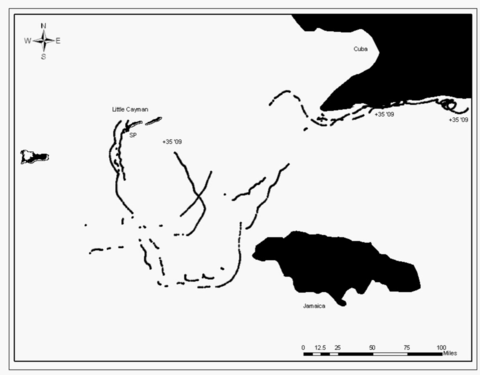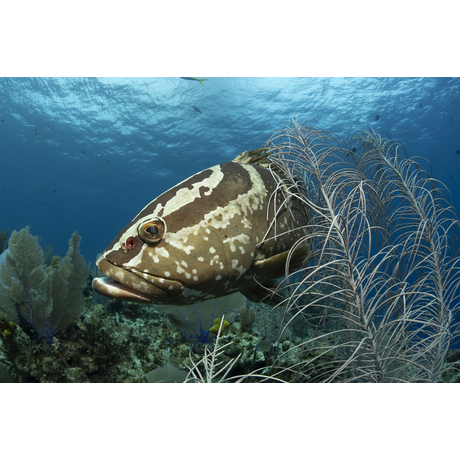The Grouper Moon Project is a research partnership between Reef Environmental Education Foundation and the Cayman Islands Department of the Environment aimed at identifying the benefits associated with conserving Nassau Grouper spawning sites in the Cayman Islands and throughout the Caribbean.
Between 2008-2011, researchers from the Grouper Moon Project conducted Baby Grouper Adrift!, using state-of-the-art satellite oceans drifters to better understand where Nassau Grouper larvae end up after being spawned.

Tracks of three drifters released on the night of peak spawning in 2008 at the Nassau Grouper spawning aggregation off the west end of Little Cayman, Cayman Islands. All three followed essentially the same path. After in initially heading south toward Jamaica, they looped back and at the 30 day mark, they were back up close to the Cayman Islands.

35-day tracks of three drifters released on the night of peak spawning in 2009 at the Nassau Grouper spawning aggregation off the west end of Little Cayman, Cayman Islands. All three followed essentially the same path. After in initially heading south toward Jamaica, two ended up along the SW coast of Cuba and the third ended up within 10 miles SE of Little Cayman. The satellite coverage was less consistent in 2009, which is why the track lines are more broken up than in 2008.

12-hour drifter tracks of drifters released at the Nassau Grouper spawning aggregation off the west end of Little Cayman, Cayman Islands in 2008. Tracks in yellow are drifters released on nights when no spawning occurred. Tracks in green, blue, and red were all released on the peak spawning night, and showed a very different current pattern than on nights of no spawning. These result indicate that the grouper are cuing in to current eddies that likely either enhance fertilization and/or keep the larvae closer to the island for longer to increase survival.
In 2011, the Disney Conservation Fund provided support to develop the Baby Grouper Adrift! webpage that allowed the public to watch the drifters report their location in real time and included the opportunity to guess where the drifters would end up at the end of the 30-45 day journey.






